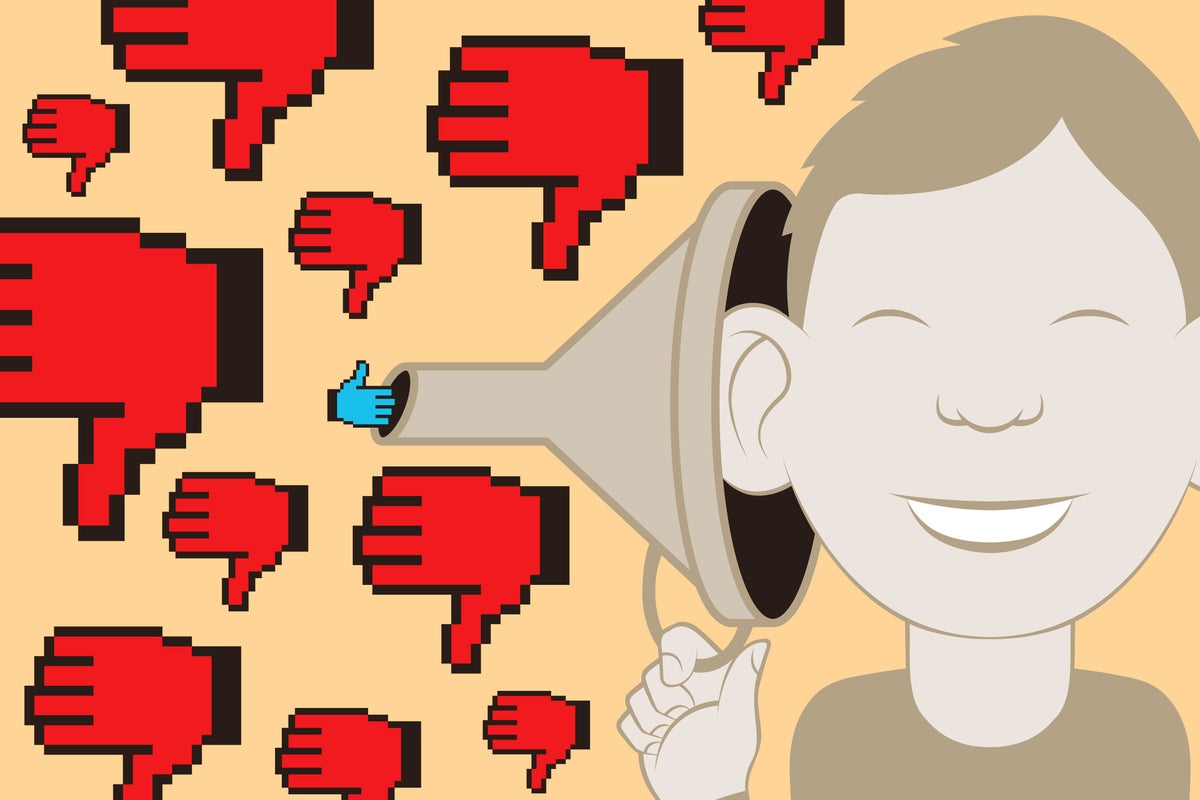A study in mice may help us understand how different people link positive or negative emotions to past events, in a discovery that could help treat post-traumatic stress disorder, anxiety and addiction
Health
21 July 2022
The expression of various genes and proteins (white, red and green) in neurons among mouse brain cells (blue) Salk Institute
A single brain molecule may influence whether the brain links positive or negative emotions to certain memories, according to a study in mice. If the results are replicated in humans, the discovery could lead to new treatments for post-traumatic stress disorder (PTSD), anxiety and addiction.
Previous studies in mice have shown that a group of neurons in the brain’s basolateral amygdala become activated when they learn to associate a particular musical tone with a sugary reward, representing a positive memory. In the same experiment, another group of neurons, also in the basolateral amygdala, were activated when the mice associated a different tone with an electric shock, a negative memory.
Hao Li at the Salk Institute for Biological Studies in California and his colleagues were unsure how this neuron activation took place. They suspected a neuropeptide called neurotensin was involved as this has been implicated in fear learning, when an animal learns to associate a neutral stimulus with something they are afraid of, such as an electric shock.
To learn more, the researchers trained a group of mice to all associate a tone with a sugary reward, another tone with an electric shock and a third tone with no stimulus.
In some of the mice, they then used the gene-editing tool CRISPR to turn off the gene that makes neurotensin in the basolateral amygdala pathway that they suspected was involved in linking emotion to memories. This is the first time CRISPR has been used to turn off a specific neurochemical function, says Li.
This method allowed the mice’s brains to develop as normal until the experiment. “If you just knocked out the gene before birth, the mouse’s brain might make adaptations to offset this loss,” says Li. “[Then] you don’t know what the effect you see [in the study] is due to.”
The researchers found that the mice that no longer produced neurotensin were considerably slower to seek out the sugar reward when they heard the “positive” tone, compared with the rodents that still produced neurotensin. A statistical analysis suggests this wasn’t a chance finding.
The team also found that the mice that no longer produced neurotensin responded more strongly to the tone associated with an electric shock than the rodents that hadn’t been genetically edited. This response was defined as the former mice staying still for longer after hearing the tone.
Li says this suggests mammals evolved to take negative emotions more seriously. Dealing with dangerous situations, such as those involving predators, is more important than seeking out treats, he says.
Humans probably have a similar mechanism, says Li, as the amygdala behaves similarly across mammals. Like mice, humans also produce neurotensin.
Li hopes the study will aid research into better PTSD, anxiety and addiction treatments.
“People with anxiety or depression have too much aversive processing where they try to avoid the threat of negative feelings compared to positive feelings,” he says. “If we can manipulate neurotensin and try to change this balance, we may be able to help people.” Addiction, in contrast, may be driven by memories of a drug being too strongly linked to positive emotions.
“This work provides critical insight into the circuit mechanism governing how organisms come to learn whether a stimulus is averse or rewarding,” says Michael Andersen at the University of Cambridge. “It adds to a growing mechanistic account necessary to understand the development of anxiety and post-traumatic stress and it is exciting work.”
Journal reference: Nature, DOI: 10.1038/s41586-022-04964-y
More on these topics:


























































